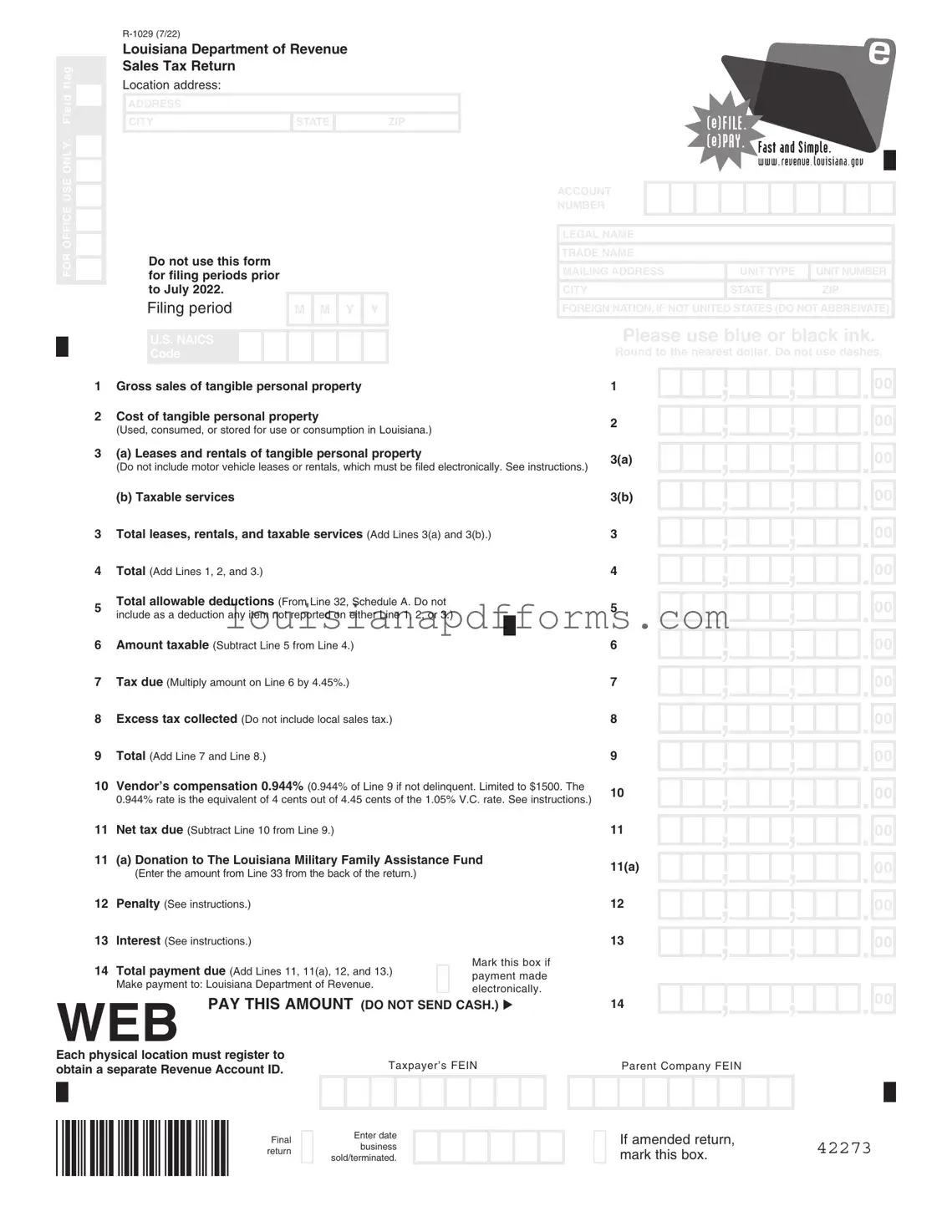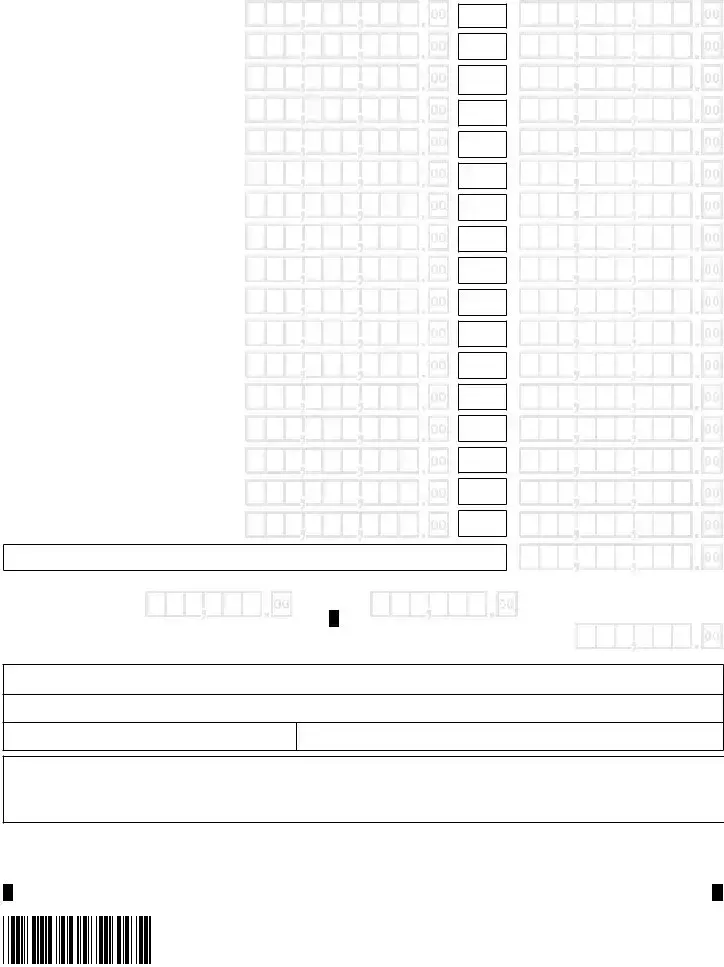Filling out the Louisiana 1029 Sales form can be a straightforward task, but many individuals make common mistakes that can lead to complications. One significant error is failing to use the correct filing period. The form specifically states that it should not be used for periods prior to August 2020. Ignoring this guideline can result in the rejection of the submission.
Another frequent mistake involves the gross sales figures. Taxpayers often miscalculate their gross sales of tangible personal property, which is reported on Line 1. Accurate reporting is crucial, as any discrepancies can lead to penalties or additional taxes owed. It is essential to double-check all figures before submission.
Many people overlook the importance of allowable deductions. On Line 5, taxpayers must enter total allowable deductions, but some fail to include only items reported on Lines 1 through 3. Including unrelated deductions can lead to incorrect tax calculations, which may trigger audits or fines.
Inaccurate tax calculations are another common pitfall. After determining the taxable amount on Line 6, it is vital to multiply this figure by the correct tax rate of 4.45% on Line 7. Some individuals mistakenly use an outdated tax rate or miscalculate the multiplication, resulting in an incorrect tax due.
Additionally, many individuals neglect to provide their Taxpayer’s FEIN or Revenue Account ID. This information is essential for processing the return. Failure to include these details can lead to delays or issues with the Louisiana Department of Revenue.
Using the wrong ink color is a surprisingly common error. The instructions explicitly state to use blue or black ink. Using any other color can cause the form to be unreadable, leading to potential processing issues.
Lastly, individuals often forget to sign the form. A signature is a crucial element that certifies the accuracy of the information provided. Without a signature, the return may be considered incomplete, resulting in delays or penalties.



